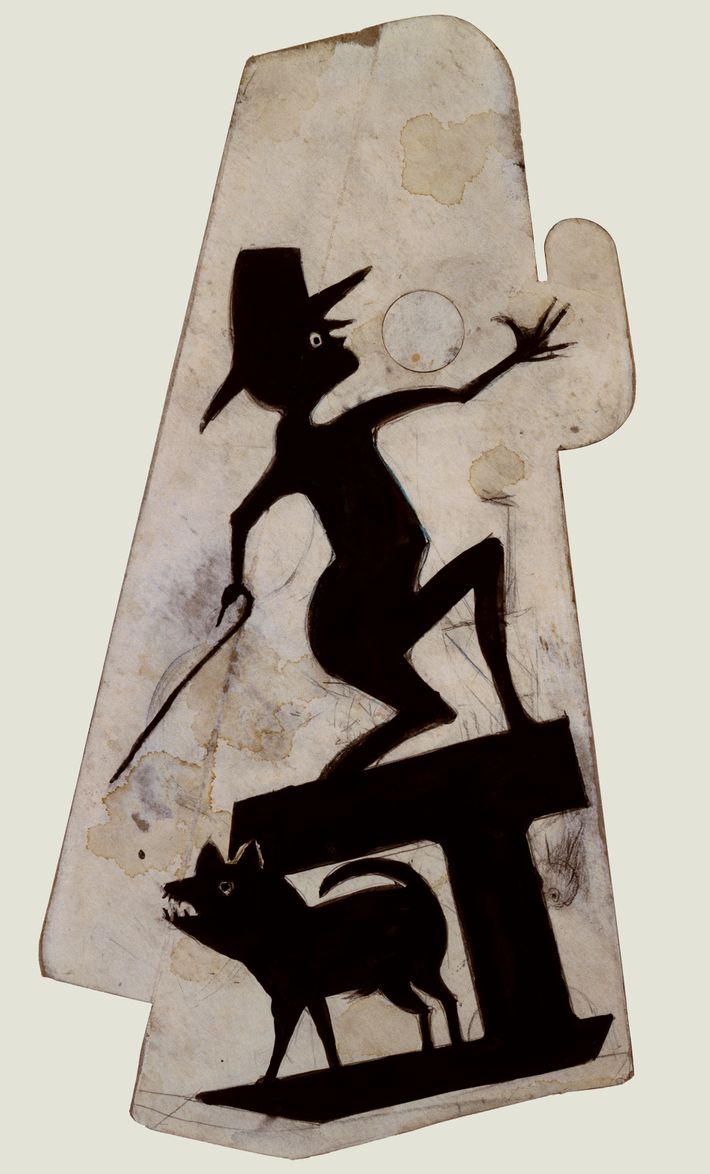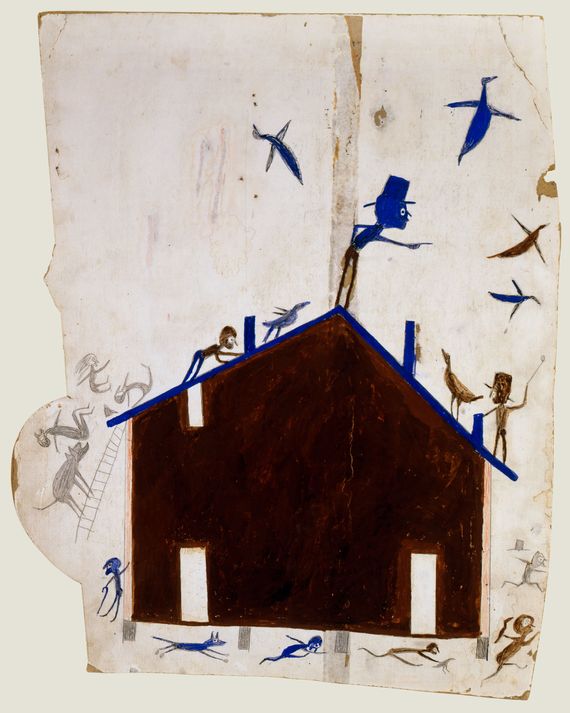The art of Bill Traylor comes to us with the ghosts of slave ships, lynchings, chain gangs, Jim Crow, justice denied — an American night-story without end. Born in Alabama in 1853, Traylor was 9 years old when Lincoln signed the Emancipation Proclamation and 12 when slavery was abolished with the 13th Amendment. He bore his owner’s name for life and resided for 55 years near the plantation where he was born; then he moved to nearby Montgomery County, where he remained until his death in 1949. In 1927 or 1928, he moved alone to the city of Montgomery, and in 1929, his son was killed by police. Ten years later, when Traylor was 85 and essentially homeless, he began to draw and paint on the streets of Montgomery, and a massive arc of art as powerful and profound as any in the 20th century shot out of him. His drawings and paintings in ink, pencil, and gouache were made on found cardboard, candy-box tops, and other odds and ends. Today, only four years of his output remain, yet we have about 1,200 works.
Some of these masterpieces are now on view at David Zwirner at 34 East 69th Street. They were in the collection of the late Wall Street billionaire and art collector William Louis-Dreyfus, who was struck by three of the artist’s works at a gallery back in 1993. “He was incredibly competitive, and he immediately recognized Traylor as a master,” says Louis-Dreyfus’s daughter the actress Julia Louis-Dreyfus. “He was determined to grab as much of that work as he could.” At one time, he owned the largest collection of Traylor’s art. Before he died in 2016, William decided to use his collection to help the nonprofit Harlem Children’s Zone. Today, his foundation is slowly selling off these pieces, with the money going to benefit thousands of Harlem schoolchildren.
I first saw Traylor’s work in my 30s, the first time it was nationally exhibited in 1982—and it blew my mind. What struck me is the way he places his characters in space and on the page; I’ve never seen an artist as gifted at having every form firmly inside a drawing. Every person, animal, and structure has this perfect relationship to and conversation with the four sides of the paper. Someone’s feet might be just on the bottom of the page. The hat of a standing man just touches the top of the paper; his raised finger pings the top edge. This isn’t some quaint, “folksy” art. Traylor is up there with Picasso in this formal regard. (I’ve actually been trying to get Traylor’s art on a U.S. postage stamp; he’s so important — and so distinctively American.)
Traylor depicts guns, vicious hounds chasing black people, plantation life, beatings, chaos. Almost everything Traylor depicts he’s witnessed, whether in life, photographs, or dreams. He painted Jesse Owens winning the Olympic gold medal in front of Adolf Hitler in 1938 as well as the black heavyweight champion of the world Joe Louis beating Max Schmeling that year.
Back in 1982, the art world was solidifying into movements and styles; modernism and postmodernism were gods. Almost nothing from the outside world was let in. But in Traylor, we can see the power of individual voice, of working with the tools and materials at hand to envision a whole world in one’s own style. His imprint is as distinctive as any artist who ever lived. His story is a vision of hell, but the work is transcendent and essential.
“Bill Traylor” is at David Zwirner through February 15.
*A version of this article appears in the November 25, 2019, issue of New York Magazine. Subscribe Now!




